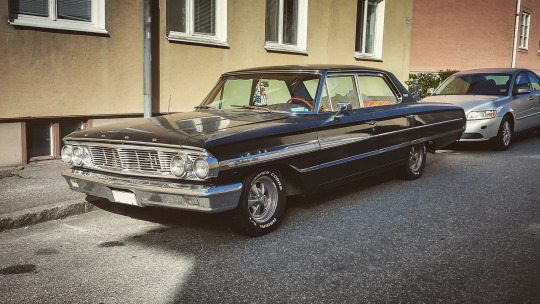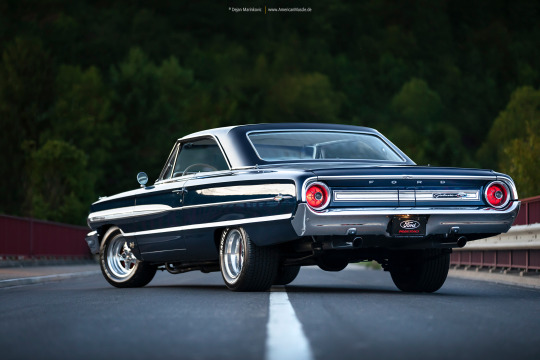#1964 ford galaxie
Explore tagged Tumblr posts
Photo

1964 Ford Galaxie 500 427 with 600 Horsepower For Sale => Read More!
https://www.musclecardefinition.com/
#american car#classic car#muscle car#1964#ford#galaxie#500#427#big block#1964 ford galaxie#ford galaxie 500#ford galaxie xl#galaxie 427
170 notes
·
View notes
Photo

“1964 Ford Galaxie”
Americanmuscle.deviantart.com
43 notes
·
View notes
Text

64 Ford Galaxie
28 notes
·
View notes
Text

1964 FORD GALAXIE 500
#1964 FORD GALAXIE 500#FORD#FORD GALAXIE#GALAXIE 500#CARSPOTTING#VETERANBIL#RAGGARBIL#CLASSIC AMERICAN CARS#CLASSIC CARS#HOT ROD#US MOTORS#AMERICAN CARS
112 notes
·
View notes
Photo

141 notes
·
View notes
Text

1964 Ford Galaxie 500
5 notes
·
View notes
Text

0 notes
Text

1964 Ford Galaxie 500 XL
2K notes
·
View notes
Text

1964 Ford Galaxie 500XL

1964 Ford Galaxie 500XL
#Ford Galaxie 500XL#Ford Galaxie 500#ford galaxie#ford#galaxie 500#galaxies#car#cars#muscle car#american muscle
329 notes
·
View notes
Text

Ford Galaxie 500XL Hardtop (1964)
#malu trevejo#mercury#flm boyz#lincoln#ford motor co#classic cars#billet rims#ford#car show#custom trucks#bullnose f150#1965 ford galaxie
337 notes
·
View notes
Text




Ford Galaxie 500 Convertible 1964. - source Classic and Modern Show Cars AU.
289 notes
·
View notes
Text
The Anatomy of the 427 SOHC – Ford’s Answer to the HEMI that was banned from NASCAR and went drag racing.
What is the most feared engine ever to come out of Ford? A very subjective question – but the Boss 302, 427 Tunnel Port, Boss 429 come to mind. All these are candidates, but a lot of people would say that distinction belongs to the 427 SOHC. Mostly referred to as a 427 “Cammer” or “Sock”.
1964 was the year that Richard Petty won the Daytona 500 with the new Dodge 426 Hemi. Ford was running the 427 Hi-Riser that year and won the majority of NASCAR races. The writing was on the wall and the boys at Ford had to come up with an answer to the new Hemi. Within 90 days, Ford took what it learned from the 255ci Dual Overhead Cam Indy motor and applied it to the bulletproof 427ci FE motor. The displacements started at 332ci and grew to 428ci. The baddest of the bad of these were the 427’s and the King of the 427’s is the 427 SOHC!
The shortblock for the “cammer” was basically all 427 hi-riser. Ford wanted to keep the cost down by using as many off-the-shelf parts as it could. The crank was the 427 forged steel version that was cross-drilled at both the mains and rods. This crank with the steel hi-riser connecting rods and special “hemi-head” pistons was the ticket needed to live at 7500 rpms. Increased oil pressure and updated water pump helped to keep all fluids flowing no matter what the conditions were.
The main thing that drew your eyes to this motor was the massive valve covers, which were made from magnesium. One look and you knew that this was no ordinary engine. The heads were cast iron and wide. With a machined combustion chamber putting the compression ratio at 12.0:1. The intake ports were a “tunnel port” design that fed 2.25″ intake valves and through 1.90″ exhaust valves, gases exited out D shaped exhaust ports. Hollow stem intake valves were used and the exhaust valve stem were sodium filled to help control the heat that is generated at 7500 rpms.
The first public mention of the Cammer V8 appeared in the Daytona Beach Morning Journalon Feb. 23, 1964. Beaten up at Daytona all month by the new 426 Hemi engines from the Dodge/Plymouth camp, Ford officials asked NASCAR to approve an overhead-cam V8 the company had in the works. But as the Journal reports here, NASCAR boss Bill France turned thumbs down on Ford’s proposed engine. France regarded overhead cams and such to be European exotica, a poor fit with his down-home vision for Grand National stock car racing.
Even though France barred the SOHC V8 from NASCAR competition, Ford proceeded to develop the engine anyway, hoping to change Big Bill’s mind. In May of 1964, a ’64 Galaxie hardtop with a Cammer V8 installed was parked behind Gasoline Alley at the Indianapolis Motor Speedway, where the assembled press corps could get a good look at it.
On October 19, 1964, NASCAR moved to ban all “special racing engines,” in its words, eliminating both the Cammer Ford and the Chrysler 426 Hemi from Grand National competition for 1965. Chrysler responded by temporarily withdrawing from NASCAR, while Ford continued on with its conventional 427 pushrod engine in NASCAR and took the SOHC engine to the drag strips.
Despite heavy lobbying from Ford, in December of 1965 NASCAR again banned the Cammer for 1966, with USAC piling on (Spartanburg Herald-Journal, December 18, 1965 above). However, in April of 1966 NASCAR finally relented. Sort of. Okay, not really. The Cammer was now allowed, technically, but only in the full-size Galaxie model, limited to one small four-barrel carb, and with an absurd, crippling weight handicap: nearly 4400 lbs, 430 lbs more than the Dodge and Plymouth hemis. At that point Ford said no thanks and dedicated the Cammer to drag racing. The engine never turned a lap in NASCAR competition.
Ford made the Cammer widely available in the drag world, providing engine deals to nitro racers Tom Hoover, Pete Robinson, Connie Kallita, and a host of others. Among the most successful Cammer-equipped drag cars were the 1966-67 Comet flip-top funny cars (Don Nicholson, Eddie Schartman, et. al.) and Mickey Thompson’s dominating ’69 Mustang team starring Danny Ongais and Pat Foster.




11 notes
·
View notes
Text
Midcentury Modern
Tim Simmons and I have new song called “Midcentury Modern” coming out on streaming services next month. As the title might imply, it’s a simple, functional song that moves in a straight line and would sound great spinning on a hi-fi at a cocktail party circa 1964 or coming through the speakers of your Ford Galaxie. But you don’t have to take my word for it! Here’s what it sounds like…
3 notes
·
View notes
Photo

This is a 1964 Ford Galaxie convertible. To see more great cars, check out the blog: https://turnerbudds-carblog.blogspot.com/
3 notes
·
View notes
Photo

192 notes
·
View notes
Text

1964 Ford Galaxie 500XL
5 notes
·
View notes